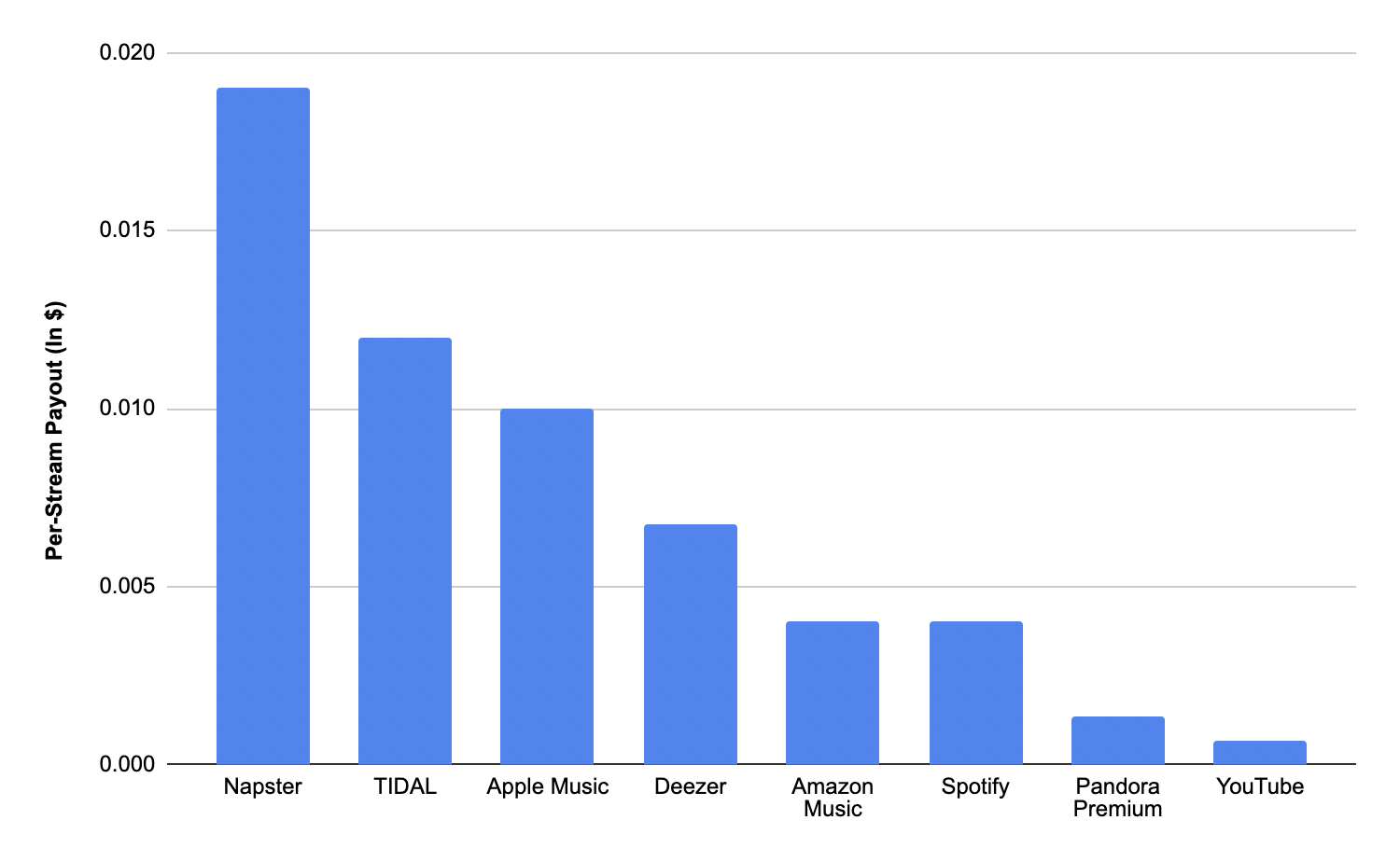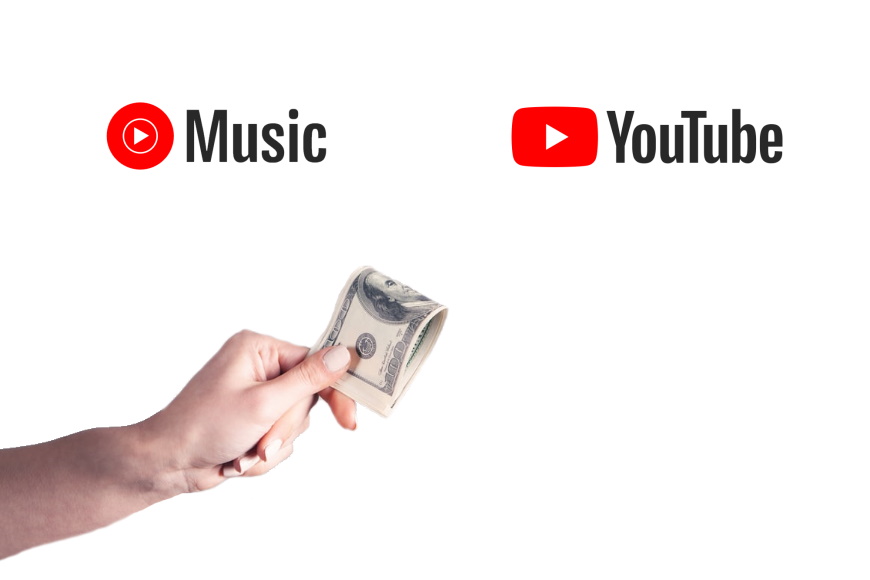Youtube Music pays artists approximately $0.003 to $0.005 per stream. This rate can vary based on several factors.
With the rise of digital music streaming platforms like Youtube Music, artists have a new avenue to share their music with a global audience. However, the payment structure can be complex, leading to questions about how much artists actually earn per stream on the platform.
Understanding how Youtube Music compensates artists for their music plays is crucial for musicians seeking to monetize their work effectively. We will explore the payment rates on Youtube Music, factors influencing earnings, and tips for artists to maximize their streaming revenue.
Youtube Music Payout Model
The YouTube Music Payout Model is essential for understanding how artists are compensated for their music on the platform. Let’s take a closer look at the YouTube Music Payout Model in terms of Revenue Generation and the impact of Advertising vs. Subscriptions.
Revenue Generation
YouTube Music generates revenue through ads and premium subscriptions.
Advertising Vs. Subscriptions
- Advertising: Artists receive payment based on ad views and engagement.
- Subscriptions: Artists earn from premium users streaming their music.

Credit: www.songme.com
Factors Affecting Artist Payout
Youtube music artist payouts per stream are influenced by several factors. These include the artist’s contract with the label, the streaming service’s payment model, the listener’s location, and the duration of the song. These factors collectively determine how much an artist earns from their music on Youtube.
Factors Affecting Artist Payout Streaming Royalties In terms of streaming royalties, YouTube Music pays artists per stream, but the exact amount can vary based on numerous factors. Listeners’ Geography The geographical location of the listeners impacts how much an artist earns per stream. For example, if a song is more popular in a country where the average streaming rate is higher, the artist is likely to earn more per stream in that location. Moreover, the specific terms of the agreement between YouTube Music and the artist or their record label can also influence the payout per stream. Additionally, factors like the popularity of the artist, the total number of streams generated, and the duration of user engagement with the content can all play a role in determining how much an artist earns per stream. Furthermore, other elements such as the user’s subscription status, advertising revenue, and the revenue-sharing model employed by YouTube Music also impact the final payout to the artist. It’s essential for artists to consider these factors when evaluating their earnings from streaming services like YouTube Music.
Comparison With Other Platforms
When it comes to the earnings from streaming music, it’s essential for artists to understand the differences between various platforms. Comparing YouTube Music with other leading streaming services provides valuable insights into the revenue potential for artists.
Youtube Music Vs. Spotify
YouTube Music and Spotify are two major players in the music streaming industry. In terms of artist payouts, YouTube Music generally pays less per stream compared to Spotify. As of 2021, YouTube Music pays around $0.004 per stream, while Spotify pays an average of $0.003 for free users and $0.006 to $0.0084 for premium subscribers. This means that artists may earn slightly more from Spotify streams as compared to YouTube Music.
Youtube Music Vs. Apple Music
When comparing YouTube Music with Apple Music, the payout structure is again different. Apple Music tends to pay artists higher royalties per stream than YouTube Music. On average, Apple Music pays around $0.0078 per stream, which is considerably higher than YouTube Music’s payout. Therefore, in terms of per-stream earnings, artists may find Apple Music to be more lucrative compared to YouTube Music.
Challenges For Artists
Creating music is more than just a passion for artists; it’s a way of life. However, artists face numerous challenges, especially when it comes to monetizing their work on platforms like YouTube Music. In this article, we will explore two significant challenges that artists encounter in the digital age.
Monetizing Views
One of the main challenges for artists on YouTube Music is monetizing their views. While the platform offers an opportunity for artists to reach a vast audience, the revenue generated from streaming is often considerably lower than expected. This is due to various factors, including the complexity of the royalty system and the platform’s algorithm for calculating payments.
Artists receive a fraction of a cent per stream, and in order to generate significant revenue, they must accumulate a substantial number of views. This puts emerging artists at a disadvantage, as they may struggle to gain the same exposure as established musicians, making it harder for them to earn a livable income solely from streaming their music. Artists must explore additional revenue streams, such as live performances, merchandise sales, and brand partnerships, to supplement their earnings from YouTube Music.
Impact Of Piracy
Another major challenge faced by artists on YouTube Music is the impact of piracy. With the ease of access to music on the internet, piracy continues to thrive, resulting in considerable financial losses for artists. Pirated copies of their music can be readily uploaded and shared on platforms like YouTube, where they garner millions of views, but without any revenue going to the artists themselves.
This not only undermines the artists’ ability to monetize their work but also diminishes the incentive for them to create new music. Why invest time and effort into producing high-quality content if others can freely distribute and consume it without compensating the artists?
Furthermore, piracy affects artists’ overall visibility and marketability. When unauthorized copies of their music are easily accessible, it becomes challenging for artists to differentiate themselves from the vast sea of content available. This hinders artists’ ability to attract attention, gain new fans, and secure lucrative opportunities, ultimately impacting their career trajectory.
In conclusion, while YouTube Music offers a platform for artists to share their music with the world, challenges remain in terms of monetization and combating piracy. Artists must find innovative ways to navigate these hurdles and diversify their revenue streams to ensure a sustainable career in an increasingly digital landscape.
The Future Of Youtube Music Payments
With the rise of streaming platforms, the way artists earn revenue from their music has shifted dramatically. YouTube Music, one of the leading platforms in the industry, has been a topic of interest when it comes to artist payments per stream. As the music industry continues to evolve, understanding the future of YouTube Music payments is crucial for artists seeking fair compensation for their work.
Emerging Trends
Several emerging trends are shaping the future of YouTube Music payments. These trends reflect the transformation happening within the music industry, as it adapts to new digital platforms and a growing audience base. Here are some key trends to keep an eye on:
- An increased emphasis on streaming revenue as the primary source of income for artists.
- Integration of blockchain technology to ensure transparent and fair payment distribution.
- The rise of alternative revenue streams, such as brand partnerships and live performances.
These emerging trends present both opportunities and challenges for artists navigating the world of YouTube Music payments. Staying informed and adaptable will be essential for success in this ever-changing landscape.
Artist-tech Platform Relationships
Artist-tech platform relationships play a crucial role in shaping YouTube Music payments. As artists increasingly rely on streaming platforms for income, forming mutually beneficial partnerships becomes paramount. Tech platforms have the opportunity to support artists by:
- Exploring innovative revenue-sharing models to better compensate artists for their work.
- Providing advanced analytics to help artists understand and engage with their audience.
- Investing in artist development programs that foster growth and success.
Building strong artist-tech platform relationships will be essential in ensuring fair compensation for artists and fostering a sustainable music industry ecosystem.

Credit: www.digitalmusicnews.com

Credit: routenote.com
Frequently Asked Questions For How Much Does Youtube Music Pay Artists Per Stream
How Much Is 1,000 Streams On Youtube Music?
1,000 streams on YouTube Music typically earn artists around $4-$5, depending on various factors.
Does Youtube Music Pay Artists Better?
Yes, YouTube Music generally pays artists better than other streaming platforms due to higher revenue shares.
How Many Music Streams Does It Take To Make $100?
It takes around 70,000 to 100,000 music streams to make $100. The exact amount varies depending on the streaming platform and the artist’s contract.
What Is The Highest Paying Music Streaming Platform?
Spotify is currently the highest paying music streaming platform, offering artists fair royalty rates.
Conclusion
It’s clear that YouTube Music’s artist payouts vary significantly. With the potential for low royalties per stream, it’s crucial for artists to diversify their revenue streams. However, with strategic marketing and broadening their platforms, artists can maximize their earnings from streaming.
Understanding these nuances is essential for success in the digital music landscape.